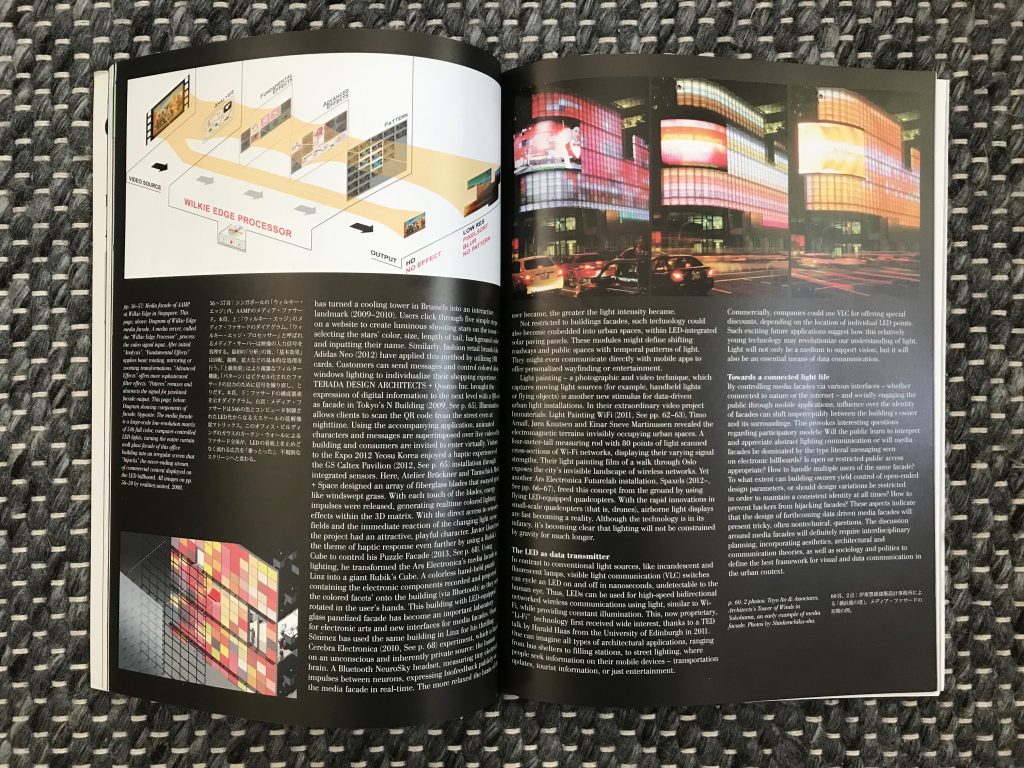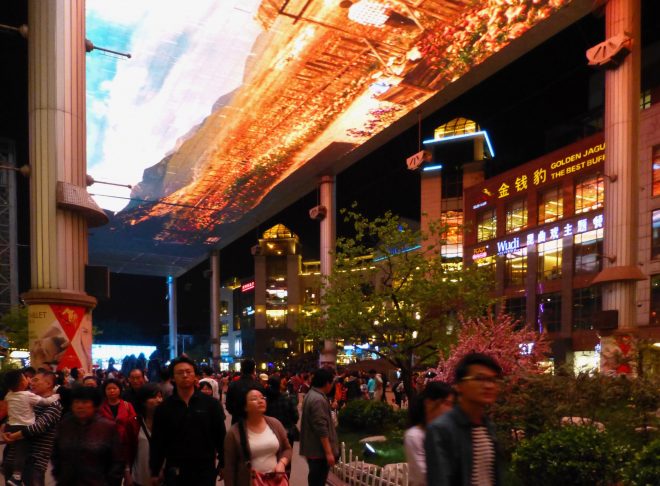Software-driven LED media façades provide new capabilities for projecting dynamic visualizations of data onto buildings as an integral part of the architecture and urban appearance. Although this trend with luminous facades including dynamic content is often linked with commercial signage and advertising, it has revived a longstanding critical debate about the roles of architectural ornamentation and iconicism. Yet media façades are becoming more than a canvas for static and repetitive brand displays. Some installations integrate sensors and interfaces to heighten their dynamism and social engagement. Using smart networks, their luminous performances are no longer restricted to a single building, but can include several buildings simultaneously. Furthermore, intelligent networks can link façades around the world. Due to these developments, designers, as well as users, need to gain experience in order to meet the challenges of connected cities, participatory models and visualization techniques. The spread of responsive surfaces will lead to new forms of urban communication. Their design will determine if we will encounter superficial monologues or long lasting memories. The following overview of sensor technology reveals the extent to which media façades react dynamically. In addition, this relatively new technique of visual light communication introduces LED light as a data transmitter.

Publication
Urban Data as Light – From Sensor-Driven Media Facades to Data Communication Through Visual Light. In: a +u (Architecture + Urbanism). 2014, 530, p.56-61.

